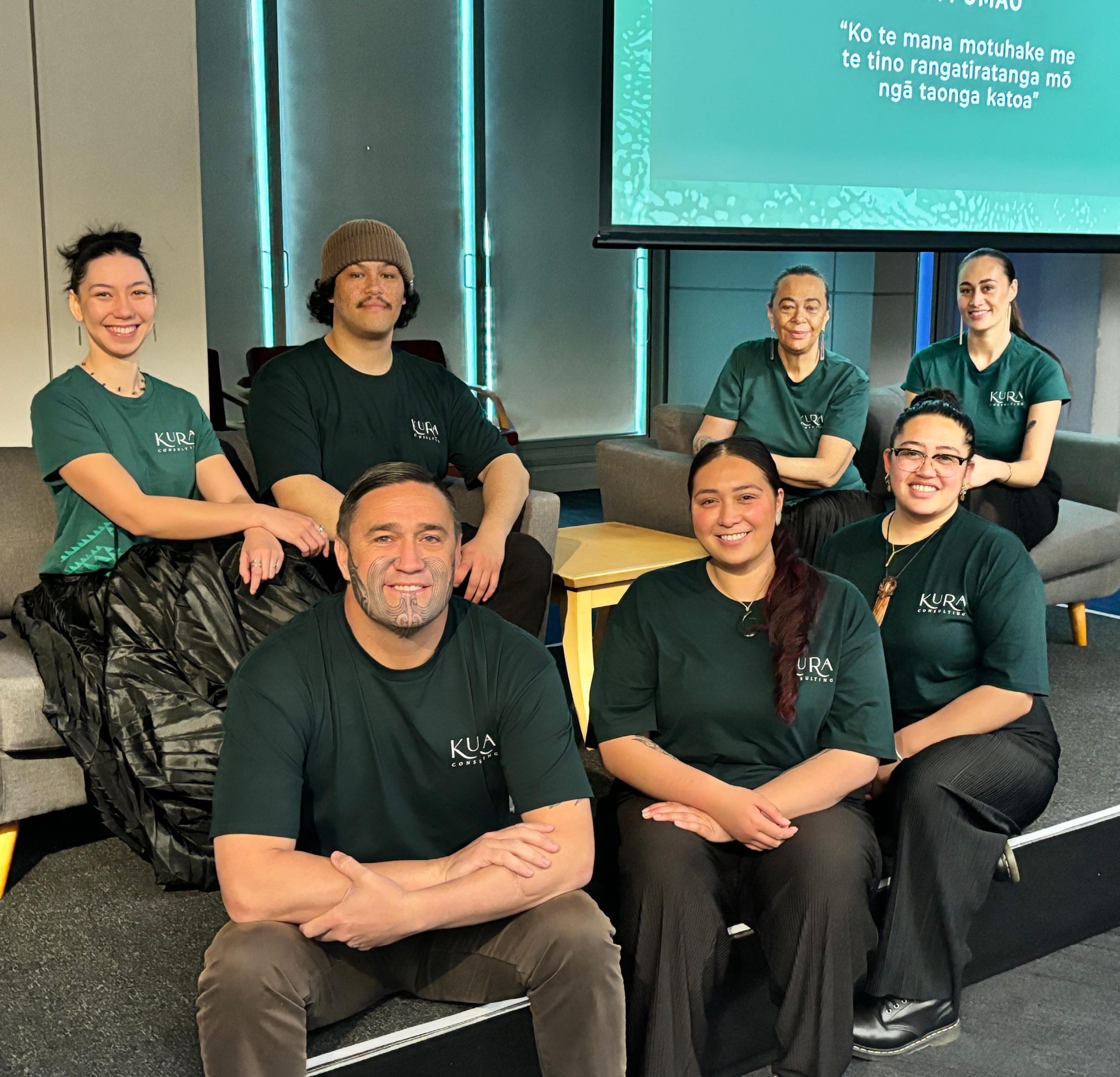WAI-262 TIAKI TAONGA PŌNEKE SYMPOSIUM
Project Report








Project Report







The Pōneke Tiaki Taonga Symposium, held at Te Papa Tongarewa, is a significant event within the Wai 262 kaupapa. Its focus is on the protection, preservation, and promotion of taonga Māori.
The symposium provided an opportunity to deepen discussions around cultural stewardship and contemporary challenges related to Māori taonga.
This report reflects the collective insights of participants and facilitators, offering a roadmap to strengthen Māori rights and practices in line with Tiaki Taonga principles.




DATE AND TIME
26 August 2024, from 9:00 AM to 6:30 PM
LOCATION
Te Papa Tongarewa, Wellington
OBJECTIVES
The symposium aimed to foster discussions around Tiaki Taonga and Wai 262, with an emphasis on Māori tino rangatiratanga and mātauranga in protecting and revitalizing taonga.
Advice for
Prior to the hui, Manawhenua emphasised the importance of having a clear and respectful engagement framework between Māori and Crown representatives. They expressed concerns that the current government environment does not appear as conducive to fostering Māori-Crown partnerships as in previous administrations. In light of this, they recommended adjusting the symposium's focus to ensure productive dialogue, even in the absence of high-level decision-makers from the Crown.
Furthermore, there was a discussion regarding the invitation of particular speakers to the symposium. While one potential speaker was noted for their pragmatic approach, there were concerns raised about previous interactions where Māori perspectives had not been respectfully acknowledged. Manawhenua ultimately felt it would be more productive to focus on participants who support a constructive and collaborative approach to Māori development.




Registrations Open 8:00 AM
Pōwhiri 9:00 AM
MC’s Welcome Kaapua Smith, Atawhai Tibble
TE HOROPAKI MŌ TIAKI TAONGA - Context
Setting the Scene
Kotahitanga in Tiaki Taonga
What is Tiaki Taonga?
Te Pae Tawhiti
9:45 AM
Kura Moeahu
Haami Piripi, Leo Watson
Henare Kani, Te WarahiHetaraka
Laine Fisher
PARAMAWANA 10:45 AM
NGĀ RARU KI UTA, NGĀ RARU KI TAI MŌ TIAKI
TAONGA
The Minor & Major Problems to Overcome 11:00 AM
Raraunga Reo o ngā Ringatoi Māori Aroha Te Pareake Mead
Voices of 100 Māori Creatives
He Puna o Wai-rua-ono-rua
Pena Makoare, Toi Māori
Kiri Toki, Tasha Hohaia, Rāniera Te Whata, Ihapera Paniora, Wiremu Rikihana, Neuton Lambert, Jonaan McLeod
WĀ TINA - LUNCH 12:00 PM
HE TAUIRA MŌ TIAKI TAONGA - Our Exemplaries 1:00 PM
Mō te Taiao Panel
International Trade Panel
Te Reo me ōna Tikanga Panel
Tina Porou Sheridan Waitai
Maui Solomon, Tina Wilson, Rachael Taulelei, Ngahiwi Tomoana
Dr Ruakere Hond, Piripi Winiata, Te Uranga Lee-Belk
PARAMAWANA 3:00 PM
KEYNOTE SPEAKER - Trevor Moeke 3:15 PM
Māori Economy Panel
Wi Pere Mita, Manu Caddie, Laine Fisher
NGĀ KAIAROTAKE MŌ TIAKI TAONGA 4:00 PM
Ngā Taiohi o Wai 262 (Tai 262)
Justice Hetaraka, Hine Waitai-Dye, Irihāpeti Roberts, Ngaa Raauira Puumanawhiti, Pene Webber, Teone McGregor
MC Wrap-up 4:30 PM
Pō whakangahau with Rob Ruha - Doors open
An evening at Te Papa to continue the kōrero, whanaungatanga and recognise the commitment many have made to this kaupapa since the claim was lodged in 1991. 6:30 PM




The event opened with a traditional pōwhiri hosted by mana whenua Taranaki whānui, acknowledging the spiritual and cultural significance of the occasion.
Kura Moeahu delivered the opening keynote speech, setting the scene by emphasising the need to protect taonga Māori and ensure their legacy through frameworks grounded in tikanga and mātauranga.
Kura Moeahu states - Will it be around in a 1000 years time? “Your karakia (christian) is protected but my karakia tuturu are not. Tō piki amokura nōu, tōku piki amokura nōku” “ka pū te ruha, ka hao te rangatahi oti ano rā e ngārangatahi pātai atu ki ngā ruha kei whea ngā ika”.
Te Horopaki mō Tiaki Taonga: Contextualising discussions on the protection of taonga.
Ngā Raru ki Uta Ngā Raru ki Tai mō Tiaki Taonga: Challenges to Tiaki Taonga.
Te Kāwanatanga Panel: Crown’s perspective on Tiaki Taonga and their responsibilities.
He Tauira mō Tiaki Taonga: A showcase of exemplary projects aimed at taonga preservation.
Panels focused on Toi Māori, mātauranga Māori, and environmental stewardship. Discussions explored innovative strategies to protect cultural expressions and empower rangatahi to ensure the sustainability of taonga.

"He rawe te kawe o te kaupapa anei. Tēnā koutou."




Nō Ngāti Porou, Te Whānau a Apanui, Tuwharetoa, Whanganui, Raukawa ki te Tonga
Atawhai Tibble is an experienced expert in the economics of Māori well-being and the value of Māori language and culture. He is of Ngāti Porou, Te Whānau a Apanui, Tuwharetoa, Whanganui, and Raukawa ki te Tonga descent. Based in Wellington, New Zealand, Atawhai is a strategist, a director, advisor, and builder of Māori capability, with interests spanning various aspects of Māori economic, cultural, and social development. Fluent in te reo Māori, he also has expertise in tikanga Māori and brings kaupapa into shared spaces. Currently, Atawhai is the Kaihautu at Barnados.

Ngāti Porou, Ngāti Apa, Ngāti Awa, Ngāi Tahu
With a career spanning more than 17 years across government and corporate sectors, Kaapua has held influential roles such as Political Advisor and Press Secretary for the Minister of Māori Affairs and Press Secretary for the Minister for Whānau Ora, as well as roles at Te Puni Kokiri and Ministry of Foreign Affairs and Trade.
“Our mātauranga is powerful and transformative. The challenge for our whānau, hapū and iwi is that we are in a process of simultaneously recovering, re-learning, restoring while also protecting it and growing our mātauranga and our practice. That’s hard, so the opportunity to wānanga and share our stories is important.”

Nō Ngā Ruahine, Te Āti Awa, Taranaki –Tuturu, Ngāti Mutunga, Ngāti Tama, Ngāti Toa
Kura is a true orator of his people and is steeped in ancient karakia, whakapapa, and kōrero tuku iho. He and his wife Alishia are a formidable couple, often seen leading many functions throughout Wellington, at Parliament, and at local, regional, national, and international events.
Kura facilitated the Wai 262 Kanohi Ora hui ki Taranaki and believes contributing to the development of the Tiaki Taonga framework is critical in achieving ‘te mana motuhake me te tino rangatiratanga mō ngā taonga katoa’.

Ngati Porou Ngati Awa Ngati Kahungunu
Trevor has worked extensively to promote Māori and indigenous development in governance, operation, and policy-making. His experience extends across the public service, private sector and Iwi Māori organisations.
Currently Poutiaki – Director Te Ao Māori Strategy and Performance at Treasury New Zealand, on building Māori capability and leading Crown Māori engagement, relationships and tax trade investment, the Māori Economy, regional development and policy.
He actively supports Crown-Māori partnerships and collaborations in tackling “BIG” challenges and building prosperity.








Panels addressed several key themes, including cultural preservation, indigenous empowerment, and environmental sustainability. Participants identified solutions and strategies for the future, focusing on how to integrate mātauranga into modern governance frameworks.

Māori legitimacy comes from ancestral ties to land and culture, highlighting the importance of collective action, protecting cultural heritage, and empowering future generations to navigate and overcome colonial challenges while fostering community engagement.

Leo Watson
Tiaki taonga framework - long term plan is constitutional transformation. Kia A E tia te whenua, kia I O tia te rangi, kia U ki te ūkaipo.

Be a role model practitioner of tiaki taonga - challenge the norm, be conscious, and support the kaupapa.
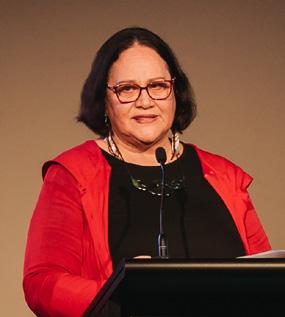
Māori artists should actively protect their creative works from misuse, highlighting the need for better resources, awareness of rights, and ethical practices in research and contracts.

Raranga and whatu are much more than art forms - the act of weaving itself is a blueprint for our future. The action of weaving and sewing together is actually the key to our solutions in the future. Te reo holds the key to te ao tukupu (the cosmos).
PUNA O WAI-RUA-ONO-RUA

Tasha Hohaia
E tipu e rea. Rōpū was established in 2023 to develop soft law solutions for immediate and long-term benefits, emphasizing the importance of using traditional knowledge and practices, collaborating with experts, and exploring five key opportunities: branding marks, traditional labels, database protections, declarations, and creative licenses, all aimed at empowering their community.

Dr Raaniera Te Whata
The power of an assertion or declaration to protect taonga and our rights.

Wiremu
Rikihana
The aim was to create a creative license template, but instead, explanatory notes are offered for creatives and whānau interested in IP agreements, outlining relevant clauses and benefits, while also noting the need for professional legal advice and enforcement challenges.

Pera Paniora
Invitation for iwi to test the tool and implement them.


Jonaan Mcleod
Build capability to understand rights and obligations.



MŌ TE TAIAO
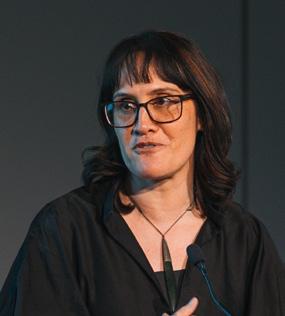
Tina Porou
And I am in a space where we have to do things that are universally appropriate for everybody, which means they are individually appropriate for no one.
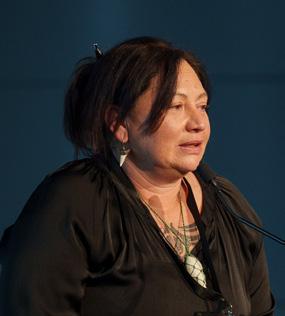
Sheridan Waitai
Claim of aroha - land is a privilege and not a right.
• Protecting te taiao requires a collective. All have a role in the revival, preservation, and protection of our taonga. From policy to local research, from soft law to lore (or tikanga), from tohunga to mokopuna.
• Be proficient in both worlds - knowing your whenua and your people, and the benefits of engaging in research and policy work.
• Activism and civil disobedience look different but are necessary for the taiao space. Challenging and recreating policies that fit our communities, and empowering our communities to be there and kaitiaki of the whenua.

Māui Solomon
Urged that independent Māori representatives must be involved in negotiating international trade agreements to safeguard Māori interests and uphold treaty obligations.
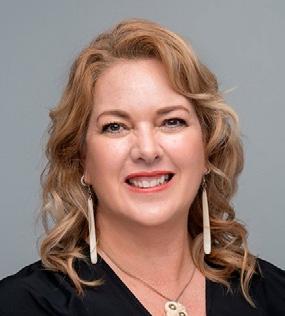
Tina Wilson
Emphasized that ineffective Māori intellectual property and brand management frameworks enable businesses to misinterpret Māori culture, blurring the line between authentic enterprises and unauthorized representations.

Rachel Taulelei
Called for flexible trade frameworks that empower Māori communities to drive economic growth through a strong pipeline of businesses across various sectors.

Dr Ruakere Hond
Ko te whānau te oranga o te reo
Māori me ōna mita.


Te Uranga Lee-Belk
Ka ora au i te reo, ka ora te reo i au.


Piripi Winiata
Learning te reo is learning to love yourself. Believe in the value of te reo Māori.
If we continue with the narrative that we will work for nothing, the world will continue to expect us to. If we don’t value our own culture, no one else is going to.
Taonga have mana in themselves. Manu Caddie challenges us to think about how we can respect the integrity and mana of each taonga. Manu is an entrepreneur and activist focused on integrating the rights of Indigenous Peoples and the Rights of Nature with biotechnology research and commercialisation.

Laine highlighted Te Puni Kōkiri’s (TPK) ongoing efforts over three years to build capability around Wai 262 issues, despite political challenges. With a strong policy team ready to implement changes, TPK seeks guidance from Māori leaders and practitioners to support evidence-based policy shifts in government.





Marewa Nathan
Tai 262 intergenerational transmission of kaupapa - mokopuna o ēnā kaikereme

As mokopuna born into the Wai 262 legacy, Tai 262 are the mokopuna of the original claimants - and they continue to practice mātauranga tuku iho. Hine Waitai-Dye embodies this, sharing her mātauranga in tā moko, whakairo, and waka building with her whānau, hapū, and iwi.

The exercise of our mātauranga should not be left on our lips, it must be practiced. Our tikanga is our constitution that guides the way we engage with our environment and with each other. And our tikanga teaches us that we are only teina within our ecosystem, within our environment. Justice shares how upholding tikanga can lead the way toward constitutional transformation.
Reverse the ideas
We are the mokopuna born into the legacy WAI262, who continue to practice mātauranga tuku iho specifically. What this means is that we are practitioners of a particular body of knowledge that has been succeeded to us from our tohunga. And our tohunga are our primary source of authority and accountability. I just want to acknowledge that source of knowledge because as papa Te Warahi always says, if you don't acknowledge the source, then it's tahae and you’re taking it for yourself.
How just this one simple thing can affect so many different people and knowledge systems, and resources, and ecosystems. So we’re taking a pest and turning it into a taonga.
Not sustainable for us to take kauri and totara from our ngahere anymore. Those that are left standing there will be ready for my mokopuna seventh mokopuna. They need a few more hundred years to grow.
HINE-WAITAI DYE





The feedback and survey data collected from the symposium provided important insights into participant experience and areas for improvement.
Familiarity with Tiaki Tāonga Before the Symposium
The survey revealed varying levels of familiarity with Tiaki Tāonga, with some iwi (e.g., Te Ātiawa, Taranaki whānui) reporting higher familiarity, while others (e.g., Ngāti Raukawa, Ngāti Maniapoto) had lower awareness. The survey indicated that familiarity was not a significant factor in how participants rated the value of the symposium, with a majority assigning perfect scores for overall value.
HOW VALUABLE DID YOU FIND THE SYMPOSIUM?
rating out of 5
Also shown was the influence this symposium had on attendee’s wanting to share their advocacy and support of the kaupapa within their spheres of influence.
HOW VALUABLE DID YOU FIND THE SYMPOSIUM?
All respondents indicated that the symposium significantly increased their understanding, with most giving a perfect rating of 5.
Perceived Value of the Symposium
All participants rated the symposium highly, with a majority giving it a 5 out of 5. The perceived value was consistent across both in-person and online attendees, though online participants rated the event slightly higher (4.8 vs. 4.77).
DID THE SYMPOSIUM INCREASE YOUR UNDERSTANDING OF TIAKI TAONGA?
rating out of 5
PERCEIVED VALUE OF TIAKI TĀONGA SYMPOSIUM



Insight: No significant suggestions were provided by participants in the feedback section. This lack of feedback may indicate overall satisfaction with the symposium.
Insight: Most respondents left the additional comments section blank, suggesting satisfaction or no additional remarks to share.
Conclusion
Summarize the key points:
HIGH SATISFACTION: Respondents generally valued the symposium and felt it increased their understanding.
FAMILIARITY WAS NOT A KEY FACTOR: The perceived value remained high regardless of prior familiarity with Tiaki Tāonga.
FEEDBACK GAPS: Lack of specific feedback suggests the need for more directed follow-up questions in future surveys.
• Provide guidance for your graphic designer:
• Use clear, bold headers for each key section.
• Incorporate minimalist infographics (bar charts, pie charts) to visually represent the data.
• Opt for simple, neutral colors that maintain the cultural and professional tone of the report.
• Integrate iwi names and cultural icons where appropriate to respect and reflect the participants.
While no significant suggestions were provided for improvement, this suggests overall a high level of satisfaction with the symposium. Few respondents left additional comments, signalling general contentment with the event

"The exercise of our mātauranga should not be left on our lips, it must be practiced."
JUSTICE HETARAKA



The survey results indicate that while respondents found the symposium highly valuable, there are noticeable differences in how familiar certain iwi are with the work of Tiaki Tāonga and the broader Wai 262 kaupapa.
• High Value but Varying Familiarity: Across the board, iwi rated the value of the symposium highly, often giving perfect scores (5 out of 5). However, familiarity with Tiaki Tāonga prior to the symposium was more varied. Some iwi, such as Te Ātiawa and Taranaki whānui, reported high levels of prior familiarity, while others, such as Ngāti Raukawa and Ngaati Maniapoto, showed lower levels of awareness.
• Multiple Affiliations: In instances where respondents had multiple iwi affiliations, the data was split to reflect their responses for each iwi. This revealed that even when an individual has affiliations with multiple iwi, their familiarity with Tiaki Tāonga can differ depending on their iwi group.
• Targeted Outreach: Iwi such as Ngāti Tukorehe, Ngāti Raukawa, and Ngāti Maniapoto showed relatively lower familiarity with Tiaki Tāonga. This suggests a need for targeted outreach or engagement activities focused on raising awareness and understanding within these iwi communities.
• Pre-Symposium Education: To address varying levels of familiarity, pre-event educational resources could be provided to iwi groups with lower awareness. This could include informational materials, online resources, or community discussions prior to future events.
Based on the data, it would be beneficial to create customised engagement plans for iwi where familiarity with Tiaki Tāonga is lower. These plans could include workshops, online resources, and localised engagement initiatives to build foundational knowledge before future events.
For iwi that are already highly familiar with Tiaki Tāonga (e.g., Te Ātiawa, Taranaki whānui), continued collaboration and deeper engagement on specific issues can build upon their existing knowledge base.

Most respondents left the additional comments section blank, suggesting a high level of satisfaction with no additional feedback to share.



Explore different communication strategies, such as social media, email campaigns, or iwi radio, to ensure that all iwi, including those with lower prior familiarity, are well informed about the activities and objectives of Tiaki Taonga.
By analysing the survey responses, we can identify clear opportunities to enhance engagement with specific iwi. With a focus on increasing awareness and understanding, particularly among iwi who are less familiar with Tiaki Tāonga, future efforts can be more inclusive and impactful, ensuring the continued success of the Wai 262 kaupapa.
Additional Insights from the Iwi Familiarity Analysis:
Respondents with multiple iwi affiliations exhibited different levels of familiarity depending on their iwi, further highlighting the need for targeted outreach. Iwi such as Ngāti Tukorehe, Ngāti Raukawa, and Ngāti Maniapoto had lower familiarity with Tiaki Tāonga, reinforcing the recommendation to implement pre-event education and tailor engagement strategies.
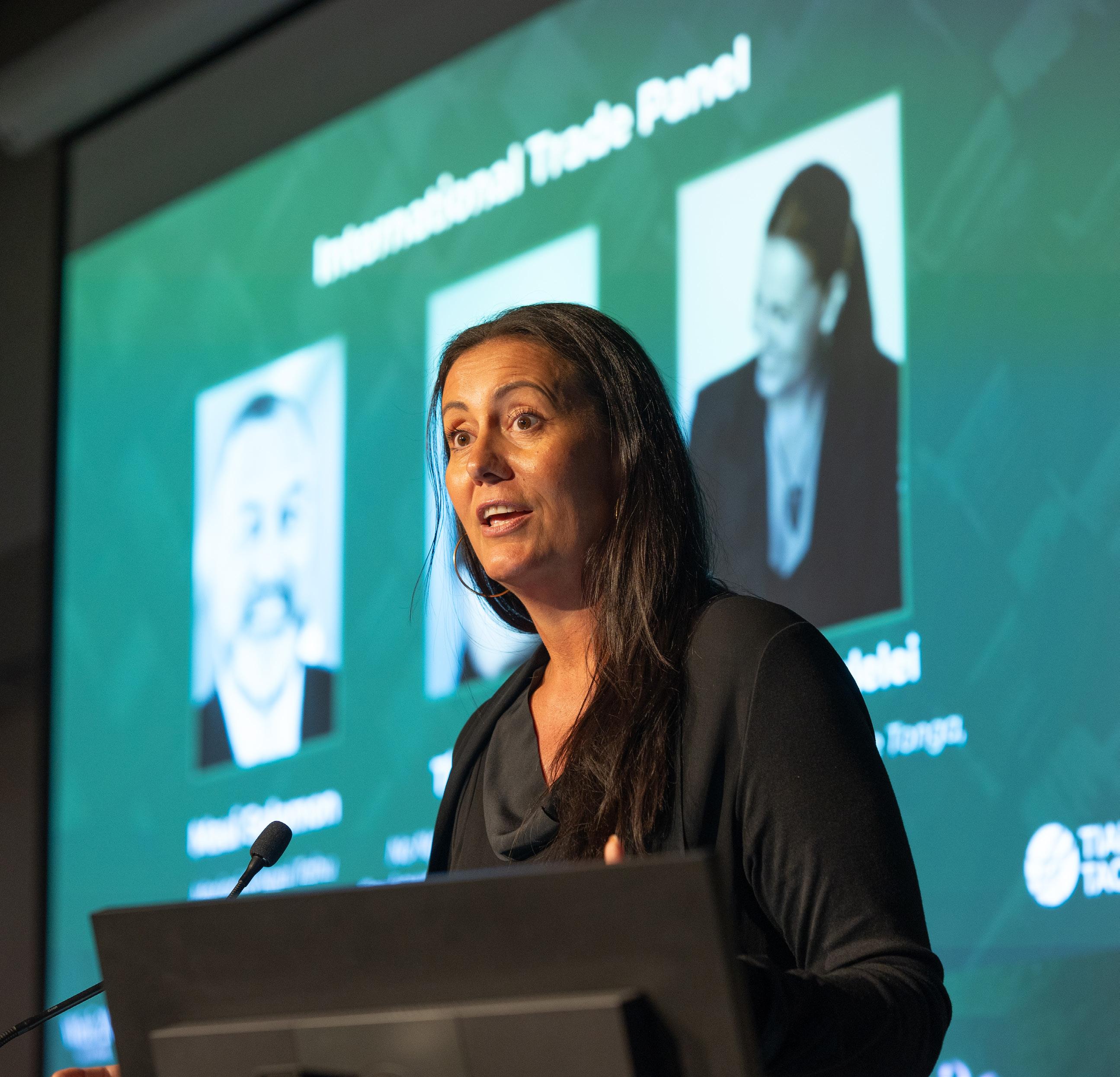



The symposium saw engagement across platforms like Instagram and Facebook. Social media interactions reached a wide audience, with key moments from the day shared widely. Media coverage also amplified the discussions, ensuring the symposium's key messages were disseminated beyond the immediate participants. JULY 31 - 4
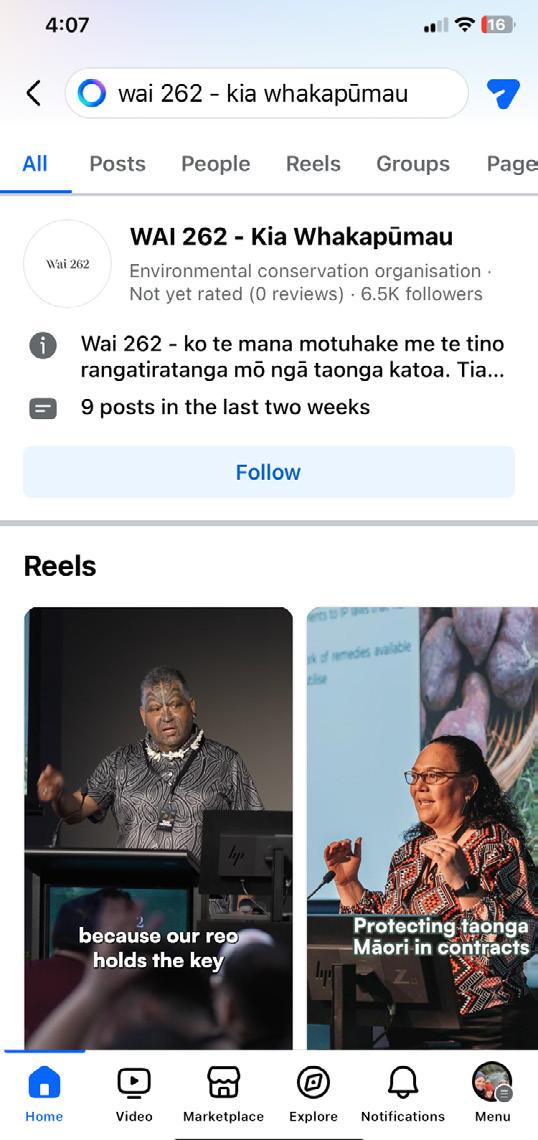
132.8K
1 Kura Moeahu on sharing mātauranga intergenerationally

Sharing mātauranga intergenerationally
2


145k 5.9k 491 1k
VIEWS REACTIONS COMMENTS SHARES

46k 1.6k 151 217 VIEWS REACTIONS COMMENTS SHARES
"This kaupapa is essential for leading the Kotahitanga movement."





VIEWS COMMENTS
Piripi Winiata on having aroha for te reo

29k 23
VIEWS COMMENTS
Kura Moeahu on sharing mātauranga intergenerationally

17k 22
VIEWS COMMENTS
COMMENTS ON SOCIAL MEDIA POSTS
"Knowledge is power!"
"Brilliant as always. Māori wisdom leading the way in Aotearoa."
"This is so powerful and important kupu for our mokopuna to hear and see these all, the beautiful kōrero presented before us. Mauri Aroha."



More focused outreach to iwi with lower awareness (e.g., Ngāti Raukawa, Ngāti Maniapoto). Presymposium educational resources, including informational materials and online resources, could help bridge the familiarity gap
Leverage broader communication platforms, such as iwi radio, social media, and email campaigns, to reach a wider audience
Develop customized engagement plans for iwi with lower familiarity, ensuring they have the foundational knowledge needed to participate. Future symposiums may benefit from a more focused selection of key speakers, allowing each voice to have a greater impact. This approach would help ensure that the audience remains fully engaged and that the key messages are delivered with clarity and depth.

"It
was wonderful. Just inspiring to be in the space with other Māori, experts, practitioners."
ATTENDEE



We extend our heartfelt appreciation to the team at Te Papa Tongarewa for their invaluable support in ensuring the success of the WAI-262 Tiaki Taonga Symposium. Their dedication and expertise were integral to the smooth running of the event, and we would like to highlight their contributions in the following areas:
The professionalism and responsiveness of Te Papa's staff were critical in managing event logistics. From coordinating pre-event arrangements to assisting participants on the day, their commitment ensured a seamless experience.
VENUE:
Te Papa provided an outstanding venue that served as the perfect setting for our symposium. The unique cultural and historical significance of the location added depth and meaning to our discussions on taonga and their protection.
The technical team at Te Papa offered exceptional guidance, ensuring that the audiovisual needs were met to a high standard. Their support allowed both in-person and online participants to engage fully with the content and each other, enhancing the overall impact of the event.
The catering team provided excellent service, offering meals that reflected both quality and care. Their attention to detail contributed to the overall comfort and enjoyment of our attendees throughout the day.
We are deeply grateful for the ongoing support from Te Papa Tongarewa and look forward to continuing our partnership in future endeavours.


Special thanks to the facilitators, organisers, participants, and sponsors for their significant contributions to the success of the event.








